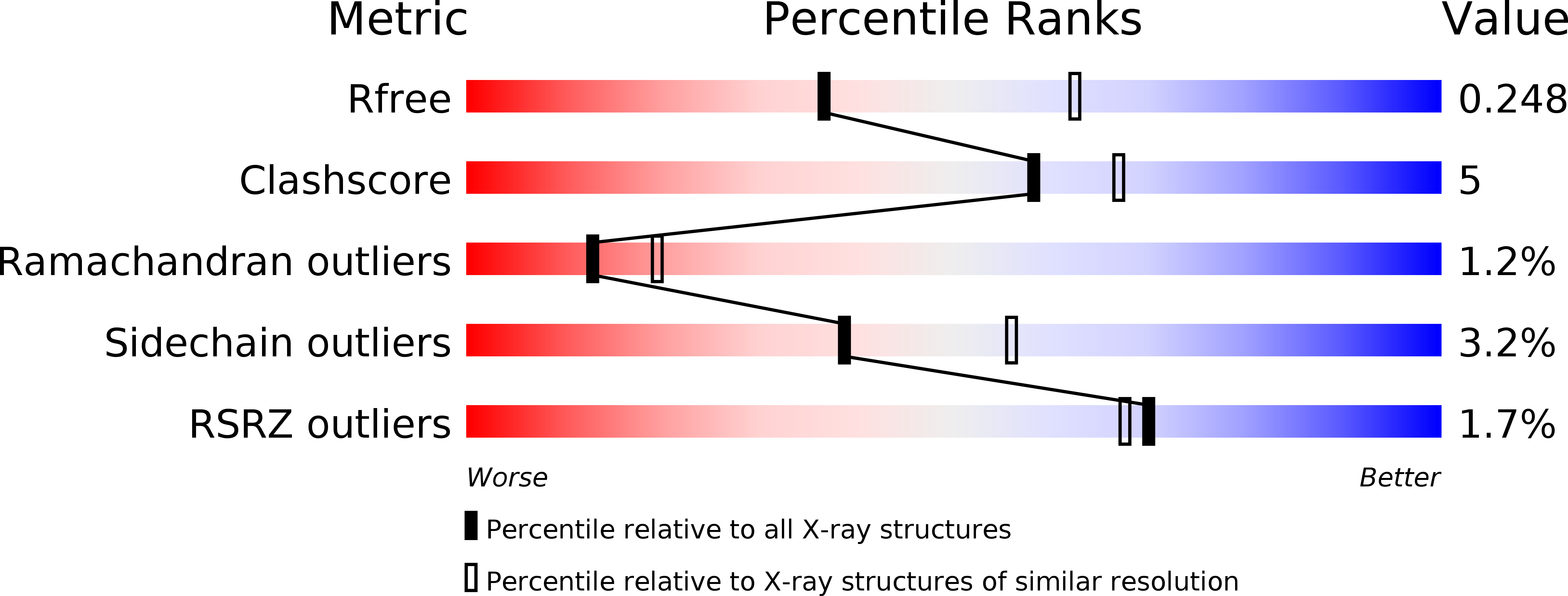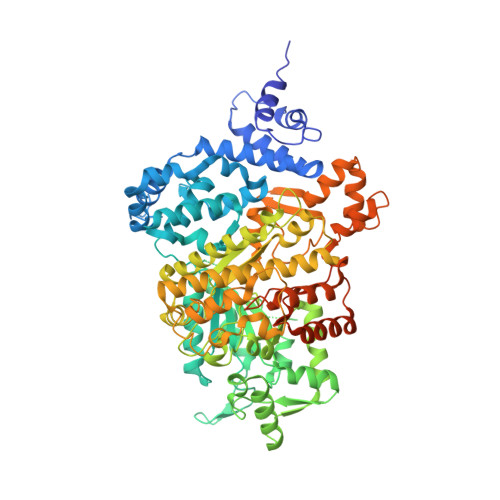Potent competitive inhibition of human ribonucleotide reductase by a nonnucleoside small molecule.
Ahmad, M.F., Alam, I., Huff, S.E., Pink, J., Flanagan, S.A., Shewach, D., Misko, T.A., Oleinick, N.L., Harte, W.E., Viswanathan, R., Harris, M.E., Dealwis, C.G.(2017) Proc Natl Acad Sci U S A 114: 8241-8246
- PubMed: 28716944
- DOI: https://doi.org/10.1073/pnas.1620220114
- Primary Citation of Related Structures:
5TUS - PubMed Abstract:
Human ribonucleotide reductase (hRR) is crucial for DNA replication and maintenance of a balanced dNTP pool, and is an established cancer target. Nucleoside analogs such as gemcitabine diphosphate and clofarabine nucleotides target the large subunit (hRRM1) of hRR. These drugs have a poor therapeutic index due to toxicity caused by additional effects, including DNA chain termination. The discovery of nonnucleoside, reversible, small-molecule inhibitors with greater specificity against hRRM1 is a key step in the development of more effective treatments for cancer. Here, we report the identification and characterization of a unique nonnucleoside small-molecule hRR inhibitor, naphthyl salicylic acyl hydrazone (NSAH), using virtual screening, binding affinity, inhibition, and cell toxicity assays. NSAH binds to hRRM1 with an apparent dissociation constant of 37 µM, and steady-state kinetics reveal a competitive mode of inhibition. A 2.66-Å resolution crystal structure of NSAH in complex with hRRM1 demonstrates that NSAH functions by binding at the catalytic site (C-site) where it makes both common and unique contacts with the enzyme compared with NDP substrates. Importantly, the IC 50 for NSAH is within twofold of gemcitabine for growth inhibition of multiple cancer cell lines, while demonstrating little cytotoxicity against normal mobilized peripheral blood progenitor cells. NSAH depresses dGTP and dATP levels in the dNTP pool causing S-phase arrest, providing evidence for RR inhibition in cells. This report of a nonnucleoside reversible inhibitor binding at the catalytic site of hRRM1 provides a starting point for the design of a unique class of hRR inhibitors.
Organizational Affiliation:
Department of Pharmacology, School of Medicine, Case Western Reserve University, Cleveland, OH 44106.

















